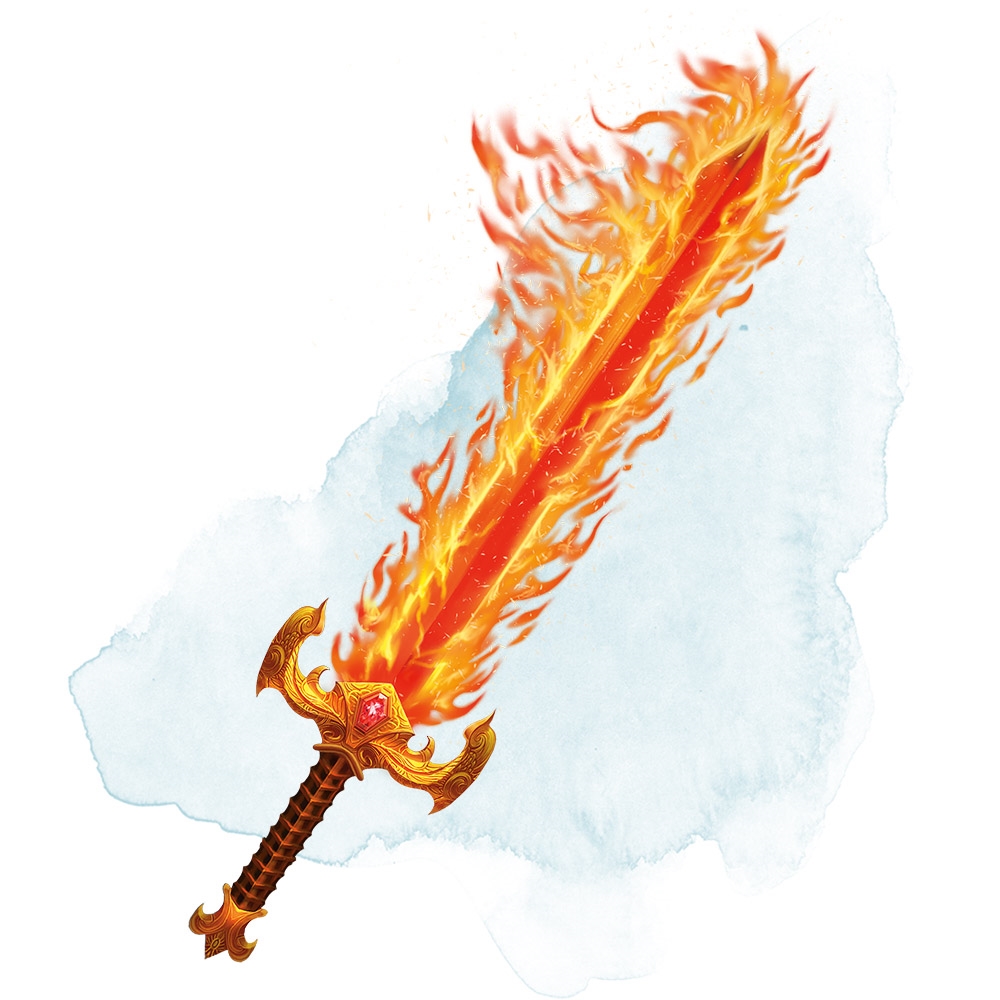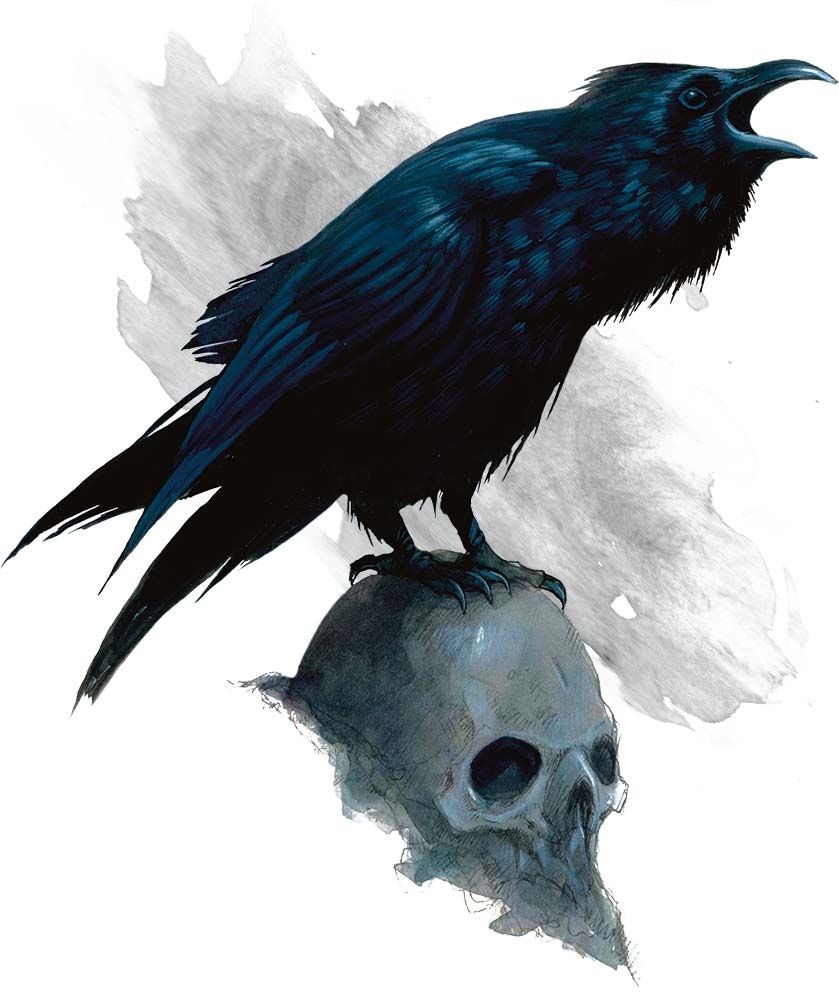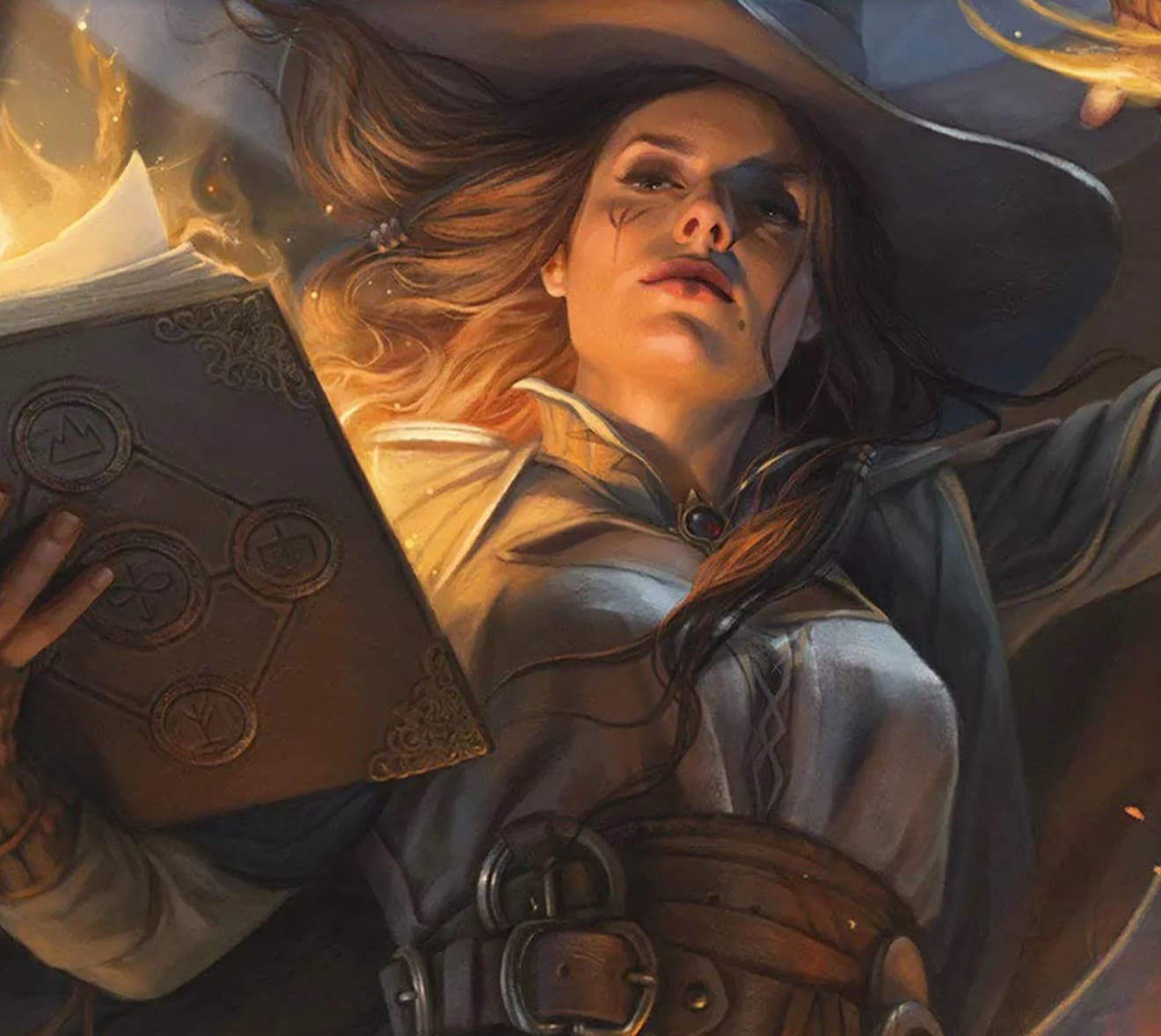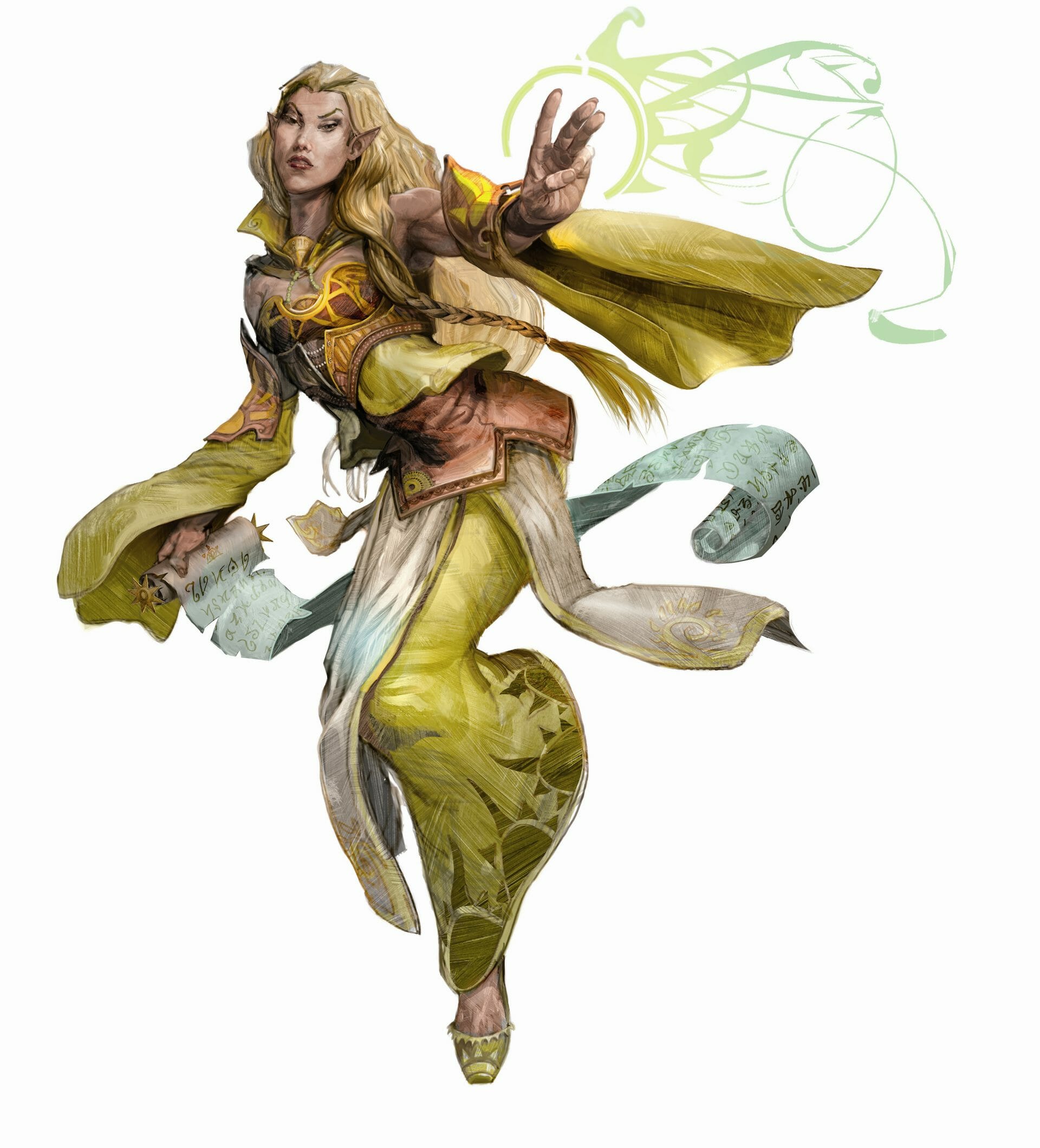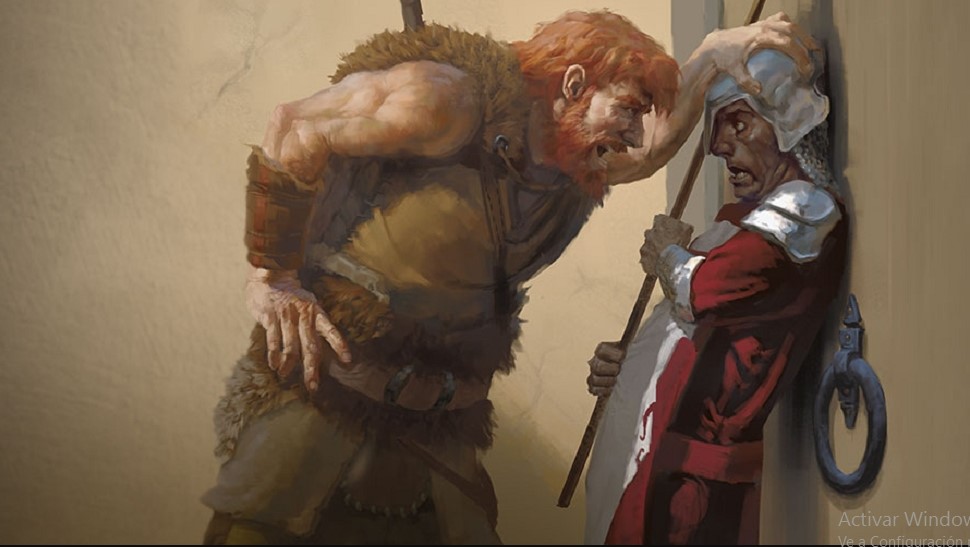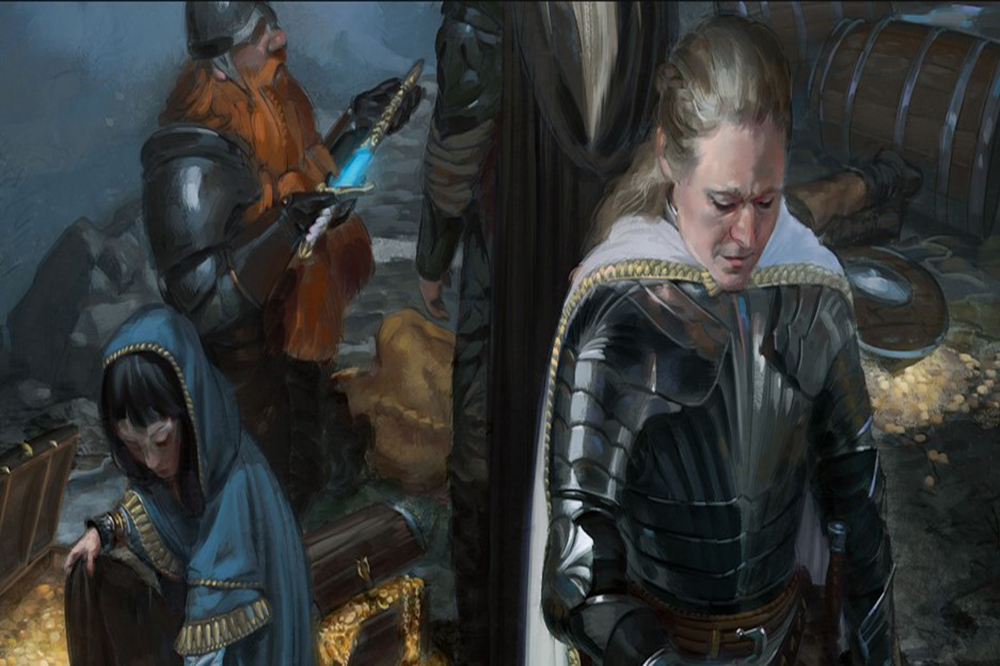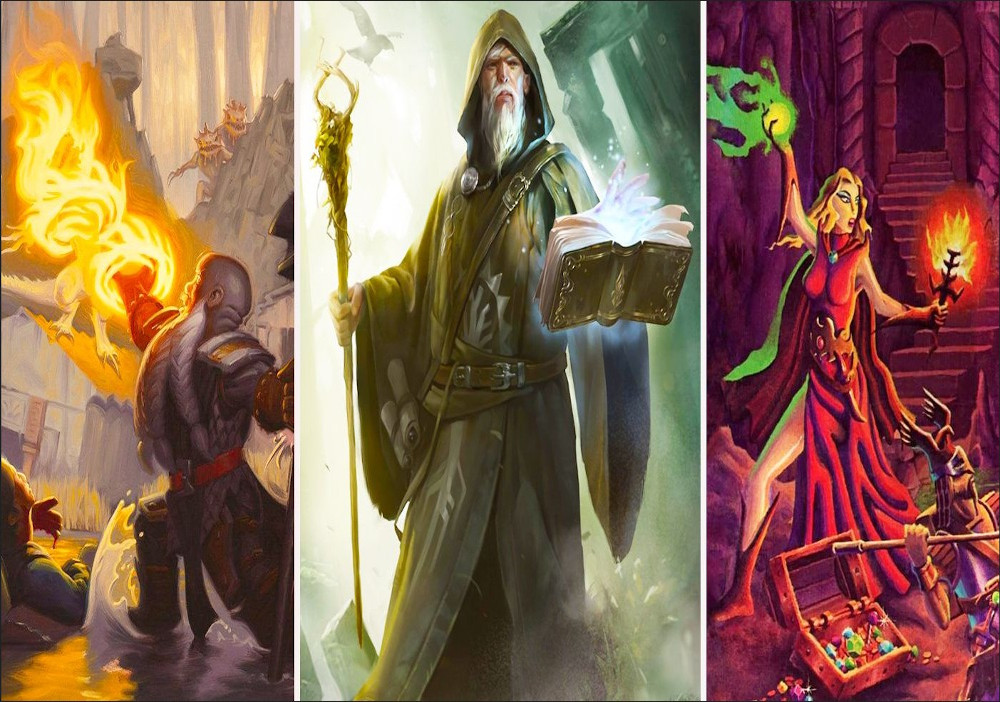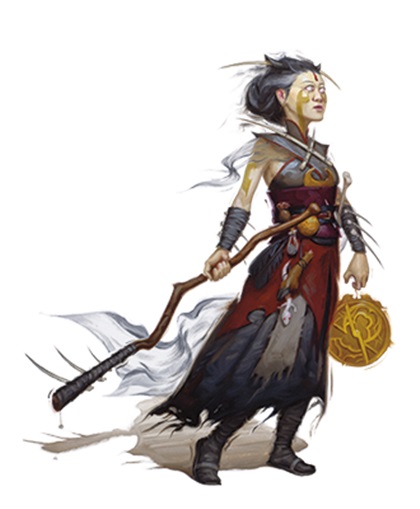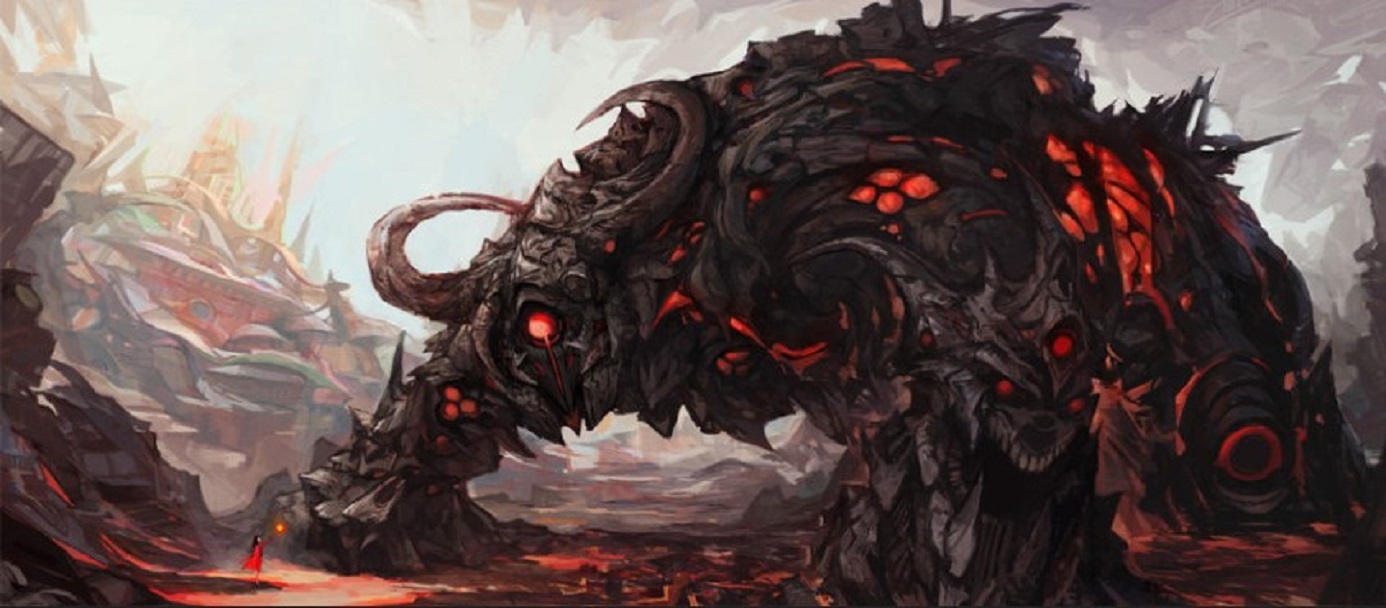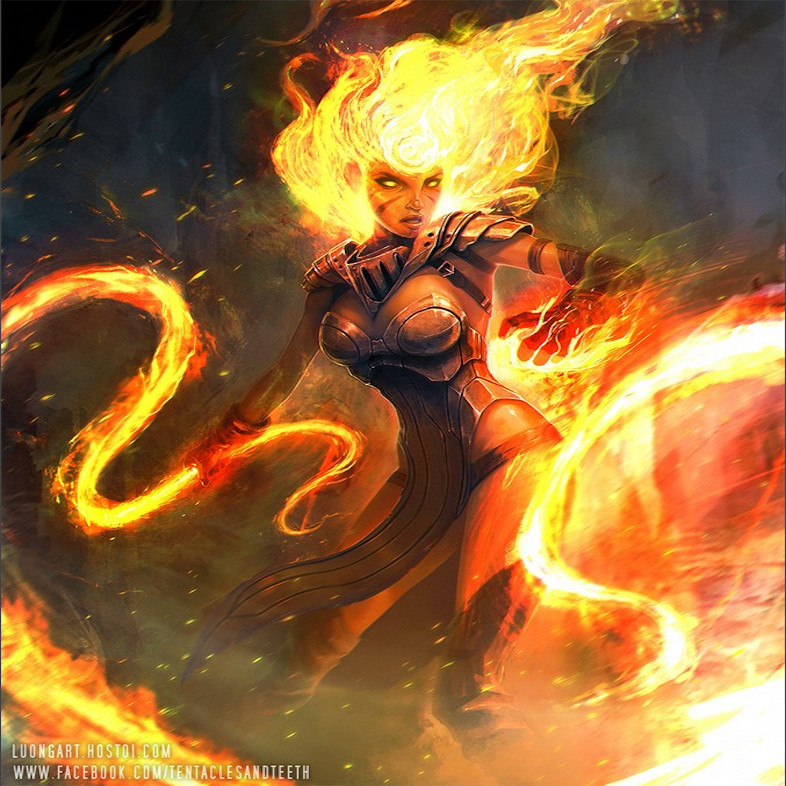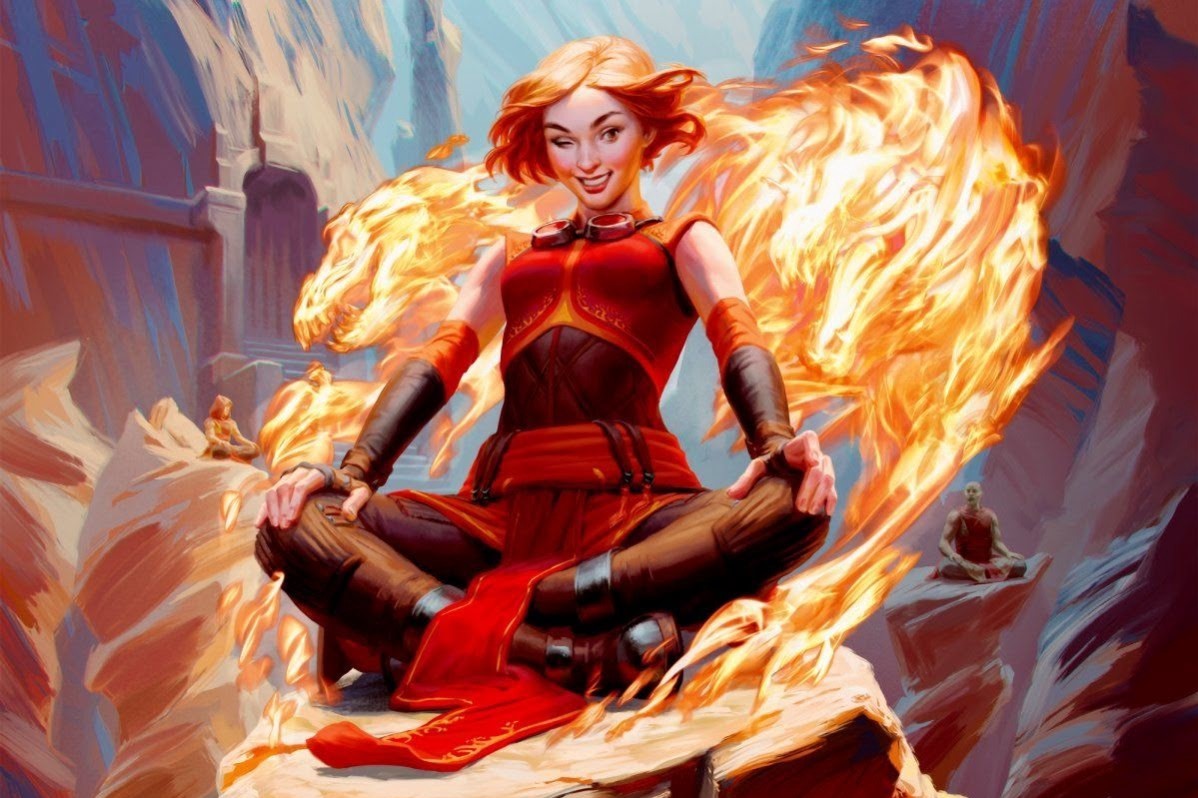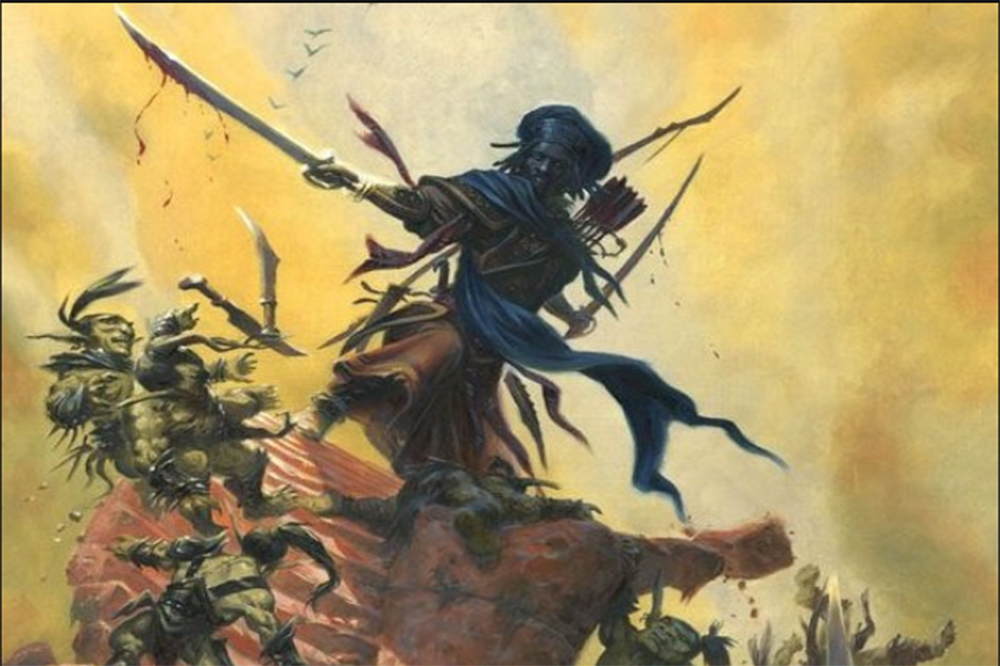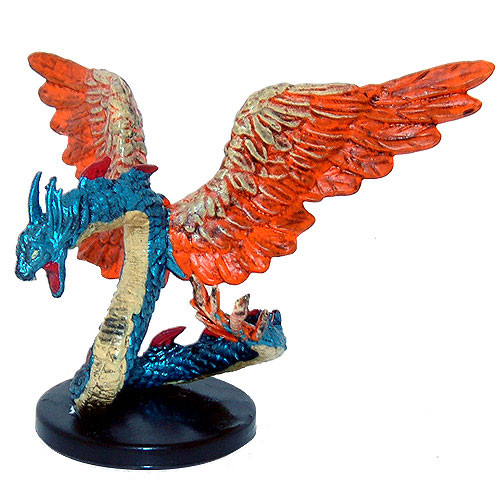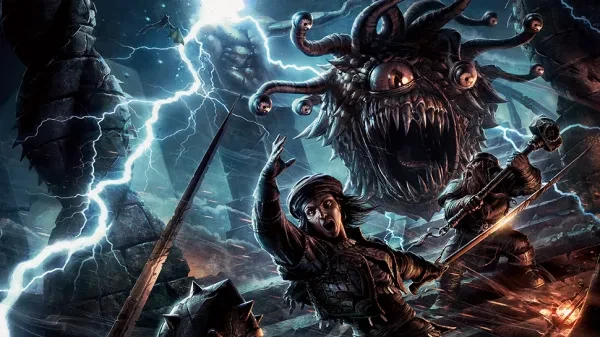
One of the most important decisions that occur for a dungeon master when planning a session is what to have your party of players fight at boss level. This can be somewhat of a daunting task, especially if you are running a homebrew campaign. Have no fear though! There is never a shortage of ideas and monsters to use for a good encounter, and this is just a small list of some of the top creatures to use and tweak for your boss fights.
Now, just a small disclaimer before we begin: the world of Dungeons & Dragons is vast with creatures, monsters, and even variants of both. And with many dungeon masters homebrewing their own content as well, the possibilities are endless in creating that perfect boss monster. I’ve had the typical encounters of a beholder, and the-not-so-typical situations of a gargantuan gnoll trying to attack a city. Therefore this list below is based off of personal experiences as a player character, and with knowledge of some of the classic monsters that are paired with horror stories from peers. We’re going to start with boss monsters that are good for lower level parties, and move up to the big baddies.
15. Werebear
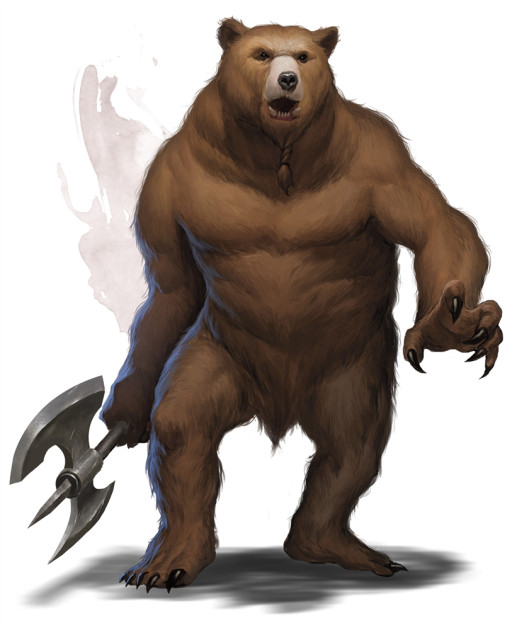
Moonlight not required
Let me start off by saying that, honestly, were-anything is quite the encounter for a party, especially a lower level. If your weapon users don’t have magical items or items coated in silver, then the monster’s damage immunities will render those characters useless. And if getting the players’ creative problem-solving juices flowing with that wasn’t enough, just add pressure by getting one of them (or two, or everyone) bit and fail a constitution saving throw; for that will cause the character who gets bit to be bit with the creature’s lycanthropy. Things just got real now for that low level party.
The good news though is that the curse can be healed by a lesser restoration spell, and the creature’s armor class is low. However, if the party doesn’t have a healer, or anyone who is a spellcaster or has magical weapon items, then it’s just bad news all around.
How Werebears Make an Exciting Encounter:
- Damage Immunities: bludgeoning, piercing, and slashing damage from non magical weapons that aren't silvered.
- Bite: (Melee Weapon Attack) +7 to hit, reach 5 ft., one target. Hit: 15 (2d10 + 4) piercing damage. If the target is a humanoid, it must succeed on a DC 14 Constitution saving throw or be cursed with werebear lycanthropy.
- Keen Smell: Advantage on Wisdom (Perception) Checks that rely on smell.
Monster details:
- Hit Points: 135 (18d8+54)
- Armor Class: 10 (humanoid form), 11 (hybrid and bear form)
- Challenge Rating: 5 (1,800 XP)
- Type: Medium humanoid, neutral good
- Source: Monster Manual
- Stat Block
14. Displacer Beast
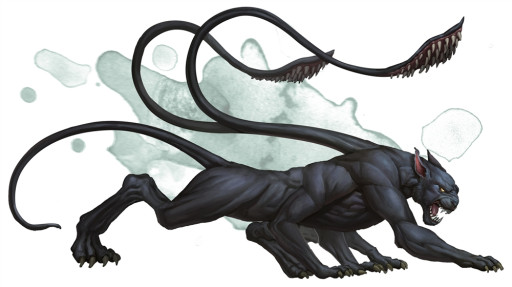
Now you see it, now you don't
Displacer Beasts may not have much of a fear factor that werebears have with their cursed bites, but they are just as tricky to combat against, if not more difficult to take down as a low level party. This would be due to its avoidance trait that would be annoying for many spellcasters, along with the fact that it projects an illusion of itself to be target practice instead of its own body. Because of that, this is a creature with a decent defense against both melee and ranged, magical and non magical attacks.
But there’s more! Tentacles! I myself am not a fan of tentacles (thanks Elder Brain) and these two tentacle attacks that the displacer beast can do, even with their range of 10ft., will be difficult to maneuver around for melee characters and those who are trying to move away from it.
How Displacer Beasts Make an Exciting Encounter:
- Avoidance: If the displacer beast is subjected to an effect that allows it to make a saving throw to take only have damage, it instead takes no damage if it succeeds on the saving throw, and only half damage if it fails.
- Displacement: The displacer beast projects a magical illusion that makes it appear to be standing near its actual location, causing attack rolls against it to have disadvantage. If it is hit by an attack, this trait is disrupted until the end of its next turn. This trait is also disrupted while the displacer beast is incapacitated or has a speed of 0.
- Higher Movement of 40ft.
Monster details:
- Hit Points: 85 (10d10+30)
- Armor Class: 13
- Challenge Rating: 3 (700 XP)
- Type: Large monstrosity, lawful evil
- Source: Monster Manual
- Stat Block
13. Troll

Trolls man
Trolls man. This is a classic monster in all types of fantasy RPG games to go up against; and they easily come in a variety of shapes, sizes, and personalities depending on the creativity of the dungeon master. Whether they are hard hitting brutes with a lot of health, or more lanky fellows with some magical elements to them, trolls are definitely another creature that can cause a party to stop in its adventuring tracks and think of a plan. Unless you’re a dwarf barbarian whose hobby is finding the biggest creatures and wrestling (a.k.a. grappling) them. Then you do you.
Apart from its regeneration of health, my favorite feature with trolls is a variant of theirs called Loathsome Limbs. Check it out below!
How Trolls Make an Exciting Encounter:
- Variant Loathsome Limbs: Whenever the troll takes at least 15 slashing damage at one time, roll a d20 to determine what else happens to it:
- 1-10: Nothing else happens
- 11-14: One leg is severed from the troll if it has any legs left
- 15-18: One arm is severed from the troll if it has any arms left
- 19-20: The troll is decapitated, but the troll dies only if it can’t regenerate. If it dies, so does the severed head.
- If the troll finishes a short or long rest without reattaching a severed limb or head, the part regrows. At that point, the severed part dies. Until then, a severed part acts on the troll's initiative and has its own action and movement. A severed part has AC 13, 10 hit points, and the troll's Regeneration trait.
- A severed leg is unable to attack and has a speed of 5 feet.
- A severed arm has a speed of 5 feet and can make one claw attack on its turn, with disadvantage on the attack roll unless the troll can see the arm and its target. Each time the troll loses an arm, it loses a claw attack.
- If its head is severed, the troll loses its bite attack and its body is blinded unless the head can see it. The severed head has a speed of 0 feet and the troll's Keen Smell trait. It can make a bite attack but only against a target in its space.
- The troll's speed is halved if it's missing a leg. If it loses both legs, it falls prone. If it has both arms, it can crawl. With only one arm, it can still crawl, but its speed is halved. With no arms or legs, its speed is 0, and it can't benefit from bonuses to speed.
Monster details:
- Hit Points: 84 (8d10+40)
- Armor Class: 15
- Challenge Rating: 5 (1,800 XP)
- Type: Large giant, chaotic evil
- Source: Monster Manual
- Stat Block
12. Gelatinous Cube
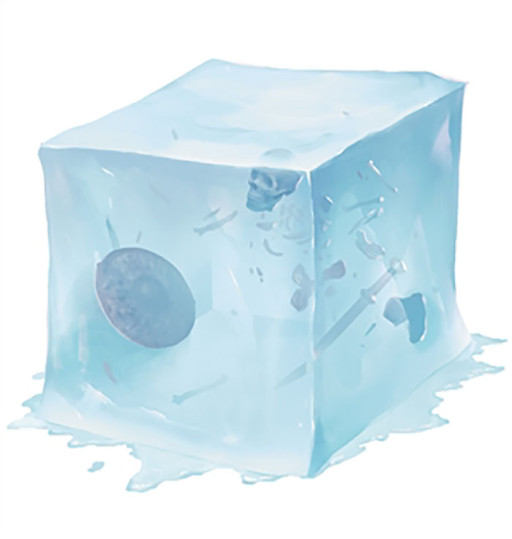
Not edible
Another classic monster in the world of Dungeons & Dragons, and one to use against a low level party for an experience to remember. This ooze may have an armor class of 6, but there’s already a decent perception check needed to see the cube in plain sight. If that perception check fails, then all this monster has to do is sneak up on a character as a surprise attack and engulf him. And that’s going to hurt. A lot.
Just imagine the creep factor with this cube: You and your party are going through a dimly lit hallway in a dungeon, and you don’t realize until you’re inside that you’ve entered this oozy substance and are completely surrounded by it. Cue receiving the burning pain of acid as a character, and your skin crawling as a player.
How Gelatinous Cubes Make an Exciting Encounter:
- Transparent: Even when the cube is in plain sight, it takes a successful DC 15 Wisdom (Perception) check to spot a cube that has neither moved nor attacked. A creature that tries to enter the cube's space while unaware of the cube is surprised by the cube.
- Engulf: The cube moves up to its speed. While doing so, it can enter Large or smaller creatures' spaces. Whenever the cube enters a creature's space, the creature must make a DC 12 Dexterity saving throw.
- On a successful save, the creature can choose to be pushed 5 feet back or to the side of the cube. A creature that chooses not to be pushed suffers the consequences of a failed saving throw.
- On a failed save, the cube enters the creature's space, and the creature takes 10 (3d6) acid damage and is engulfed. The engulfed creature can't breathe, is restrained, and takes 21 (6d6) acid damage at the start of each of the cube's turns. When the cube moves, the engulfed creature moves with it.
- An engulfed creature can try to escape by taking an action to make a DC 12 Strength check. On a success, the creature escapes and enters a space of its choice within 5 feet of the cube.
Monster details:
- Hit Points: 84 (8d10+40)
- Armor Class: 6
- Challenge Rating: 2 (450 XP)
- Type: Large ooze, unaligned
- Source: Monster Manual
- Stat Block
11. Barbed Devil
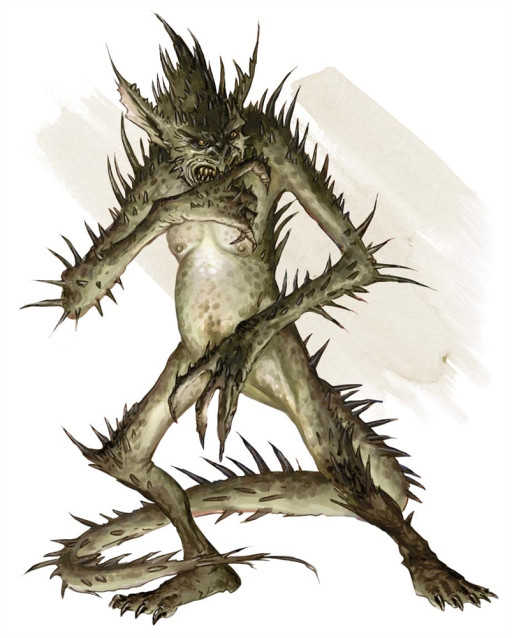
Warning: It's feisty
The barbed devil is another monster where if the party doesn’t wield magical or silver items, there’s some potential trouble. Another problem that a party can run into is its immunity to fire, which is a common magical damage type for spellcasters. The bright side to this creature though is you won’t get cursed by a bite like the werebear! The downside is to worry about its barbed hide if you’re grappled.
Oh, and don’t forget that it has a spell ranged attack in addition to its melee attacks too. The point is, if you are a dungeon master that’s looking to give your lower level party a good (and always fun, remember the fun part) challenge, this is your fiend to use. Have the party run into a cult of spellcasters trying to summon this creature, but the cult can’t control it, and the devil is set loose. Now there’s a sudden encounter for the party to handle.
How Barbed Devils Make an Exciting Encounter:
- Barbed Hide: At the start of each of its turns, the barbed devil deals 5 (1d10) piercing damage to any creature grappling it.
- Magic Resistance: The devil has advantage on saving throws against spells and other magical effects.
- Damage Resistances: cold, bludgeoning, piercing, and slashing from non magical weapons that aren’t silvered.
Monster details:
- Hit Points: 110 (13d8+52)
- Armor Class: 15
- Challenge Rating: 5 (1,800 XP)
- Type: Medium fiend (devil), lawful evil
- Source: Monster Manual
- Stat Block
10. Rakshasa

Master of illusions
Cue in Sam Riegel with “Rakshasa!” These creatures are pretty sneaky and can be difficult to find, thanks to its knowledge of illusion spells. Like other monsters, this one has damage immunities to your regular bludgeoning, piercing, and slashing damage from non magical weapons. That may not be a problem anymore for a group that’s double digits in level, until of course it uses fly and most ranged weapons then won’t work (normal bolts and arrows for example).
Regardless, there are still plenty of other things to worry about. Take a look at the fact a Rakshasa can use invisibility and plane shift. If the monster has a chance to use it as an escape, it most definitely will. It can also use invisibility to sneak and target a more vulnerable character in the party. When you pair that elusiveness with its DC of 18 on spell saves against the party, like when it uses charm or dominate person, it can be trouble; especially if a party doesn’t have a spellcaster with the ability to counterspell anything.
How Rakshasas Make an Exciting Encounter:
- Limited Magic Immunities: The Rakshasa can’t be affected for detected by spells of 6th level or lower unless it wishes to be. It has advantage on saving throws against all other spells and magical effects.
- Cursed Claw Attack: Melee Weapon Attack: +7 to hit, reach 5 ft., one target. Hit: 9 (2d6 + 2) slashing damage, and the target is cursed if it is a creature. The magical curse takes effect whenever the target takes a short or long rest, filling the target's thoughts with horrible images and dreams. The cursed target gains no benefit from finishing a short or long rest. The curse lasts until it is lifted by a remove curse spell or similar magic.
- Innate Spellcasting: The rakshasa's innate spellcasting ability is Charisma (spell save DC 18, +10 to hit with spell attacks). The rakshasa can innately cast the following spells, requiring no material components:
- At will: detect thoughts, disguise self, mage hand, minor illusion
- 3 times per day each: charm person, detect magic, invisibility, major image, suggestion
- Once day each: dominate person, fly, plane shift, true seeing
Monster details:
- Hit Points: 110 (13d8+52)
- Armor Class: 16
- Challenge Rating: 13 (10,000 XP)
- Type: Medium fiend, lawful evil
- Source: Monster Manual
- Stat Block
9. Demilich

Lich monster #1
I’m going to start with two words on this one: resistances and immunities. A demilich is resistant to bludgeoning, piercing and slashing damage from magic weapons, but immune to that type of damage from non magical weapons, along with necrotic, poison, and psychic damage. On top of all that, the monster is immune to a handful of conditions, which can make crowd control during the encounter somewhat difficult.
There’s more though! Spellcasters who rely on failed saving throws to do full magical damage are in for a treat with its avoidance trait. This is already a lot to process for this creature, and that’s not even covering the demilich’s actions yet. There are plenty of actions and legendary actions to be concerned about as a party, such as Vile Curse and Energy Drain; but if the dice rolls are in the dungeon master’s favor and the combination of the moves are done well with other actions, Howl and Life Drain are a real problem.
Let’s just say I will never forget an encounter with our frontline character going down instantly with howl, and the rest of the squishy party trying to figure out how to get him up, fight, and protect ourselves all at the same time.
How Demiliches Make an Exciting Encounter:
- Avoidance: If the demilich is subjected to an effect that allows it to make a saving throw to take only half damage, it instead takes no damage if it succeeds on the saving throw, and only half damage if it fails.
- Howl: The demilich emits a bloodcurdling howl. Each creature within 30 feet of the demilich that can hear the howl must succeed on a DC 15 Constitution saving throw or drop to 0 hit points. On a successful save, the creature is frightened until the end of its next turn.
- Life Drain: The demilich targets up to three creatures that it can see within 10 feet of it. Each target must succeed on a DC 19 Constitution saving throw or take 21 (6d6) necrotic damage, and the demilich regains hit points equal to the total damage dealt to all targets.
Monster details:
- Hit Points: 80 (20d4)
- Armor Class: 20
- Challenge Rating: 18 (20,000 XP)
- Type: Tiny Undead, neutral evil
- Source: Monster Manual
- Stat Block
8. Beholder

Watch for those eyes!
Beholders are wonderful and classic boss monsters in the world of Dungeons & Dragons, and they can certainly be a fun challenge for parties. The eye rays are great offense and crowd control against multiple targets at once, while the antimagic cone can be a great defense. Doing that can give this monster severe advantage and control of the fight by subduing big threats and singling out small threats in the party.
This kind of fight will have the players needing to think on their feet to survive, while also trying to take this creature down quickly. If there are any characters that are immune to certain conditions (like elves who can’t fall asleep), that will certainly help against some of the rays’ effects. These are the creatures that are both loved and hated by the community; and if you have an encounter with one, get ready!
How Beholders Make an Exciting Encounter:
- Eye Rays: The beholder shoots three of the following magical eye rays at random (reroll duplicates). Choosing one to three targets it can see within 120ft. of it.
- 1. Charm Ray. The targeted creature must succeed on a DC 16 Wisdom saving throw or be charmed by the beholder for 1 hour, or until the beholder harms the creature.
- 2. Paralyzing Ray. The targeted creature must succeed on a DC 16 Constitution saving throw or be paralyzed for 1 minute. The target can repeat the saving throw at the end of each of its turns, ending the effect on itself on a success.
- 3. Fear Ray. The targeted creature must succeed on a DC 16 Wisdom saving throw or be frightened for 1 minute. The target can repeat the saving throw at the end of each of its turns, ending the effect on itself on a success.
- 4. Slowing Ray. The targeted creature must succeed on a DC 16 Dexterity saving throw. On a failed save, the target's speed is halved for 1 minute. In addition, the creature can't take reactions, and it can take either an action or a bonus action on its turn, not both. The creature can repeat the saving throw at the end of each of its turns, ending the effect on itself on a success.
- 5. Enervation Ray. The targeted creature must make a DC 16 Constitution saving throw, taking 36 (8d8) necrotic damage on a failed save, or half as much damage on a successful one.
- 6. Telekinetic Ray. If the target is a creature, it must succeed on a DC 16 Strength saving throw or the beholder moves it up to 30 ft. in any direction. It is restrained by the ray's telekinetic grip until the start of the beholder's next turn or until the beholder is incapacitated.
- If the target is an object weighing 300 pounds or less that isn't being worn or carried, it is moved up to 30 ft. in any direction. The beholder can also exert fine control on objects with this ray, such as manipulating a simple tool or opening a door or a container.
- 7. Sleep Ray. The targeted creature must succeed on a DC 16 Wisdom saving throw or fall asleep and remain unconscious for 1 minute. The target awakens if it takes damage or another creature takes an action to wake it. This ray has no effect on constructs and undead.
- 8. Petrification Ray. The targeted creature must make a DC 16 Dexterity saving throw. On a failed save, the creature begins to turn to stone and is restrained. It must repeat the saving throw at the end of its next turn. On a success, the effect ends. On a failure, the creature is petrified until freed by the greater restoration spell or other magic.
- 9. Disintegration Ray. If the target is a creature, it must succeed on a DC 16 Dexterity saving throw or take 45 (10d8) force damage. If this damage reduces the creature to 0 hit points, its body becomes a pile of fine gray dust.
- If the target is a Large or smaller non magical object or creation of magical force, it is disintegrated without a saving throw. If the target is a Huge or larger object or creation of magical force, this ray disintegrates a 10-foot cube of it.
- 10. Death Ray. The targeted creature must succeed on a DC 16 Dexterity saving throw or take 55 (10d10) necrotic damage. The target dies if the ray reduces it to 0 hit points.
- Antimagic Cone: The beholder's central eye creates an area of antimagic, as in the antimagic field spell, in a 150-foot cone. At the start of each of its turns, the beholder decides which way the cone faces and whether the cone is active. The area works against the beholder's own eye rays.
Monster details:
- Hit Points: 189 (19d10+76)
- Armor Class: 18
- Challenge Rating: 13 (10,000 XP)
- Type: Large aberration, lawful evil
- Source: Monster Manual
- Stat Block
7. Lich
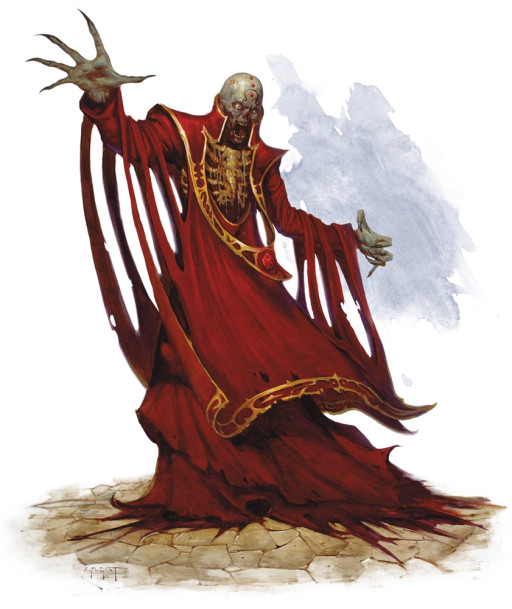
Lich monster #2
Spellcasters truly add some tension to an encounter, and liches can be crafty depending on how their spells are used. They certainly have the damage dealers like magic missile and fireball, and they have utility and ways of escaping with invisibility, plane shift, and counterspell. You don’t want this monster to move too much around the party either. Its actions of paralyzing touch and even frightening gaze are enough to stop characters from advancing, which is helpful defense for this creature since it relies more on damage from its spells.
If the party wants to ensure a lich stays down after an encounter (or before if they’re proactive enough), they will need to locate its phylactery and destroy it, otherwise the monster can gain a new body after a number of days and become active again.
How Liches Make an Exciting Encounter:
- Spellcasting: 18th level spellcaster. Its spellcasting ability is intelligence (spell save DC 20, +12 to hit with spell attacks). The lich has the following wizard spells prepared:
- Cantrips (at will): mage hand, prestidigitation, ray of frost
- 1st level (4 slots): detect magic, magic missile, shield, thunderwave
- 2nd level (3 slots): detect thoughts, invisibility, Melf’s acid arrow, mirror image
- 3rd level (3 slots): animate dead, counterspell, dispel magic, fireball
- 4th level (3 slots): blight, dimension door
- 5th level (3 slots): cloudkill, scrying
- 6th level (1 slot): disintegrate, globe of invulnerability
- 7th level (1 slot): finger of death, plane shift
- 8th level (1 slot): dominate monster, power word stun
- 9th level (1 slot): power word kill
- Rejuvenation: If it has a phylactery, a destroyed lich gains a new body in 1d10 days, regaining all of its hit points and becoming active again. The new body appears within 5ft. of the phylactery.
Monster details:
- Hit Points: 135 (18d8+54)
- Armor Class: 17
- Challenge Rating: 21 (33,000 XP)
- Type: Medium undead, any evil alignment
- Source: Monster Manual
- Stat Block
6. Illithilich
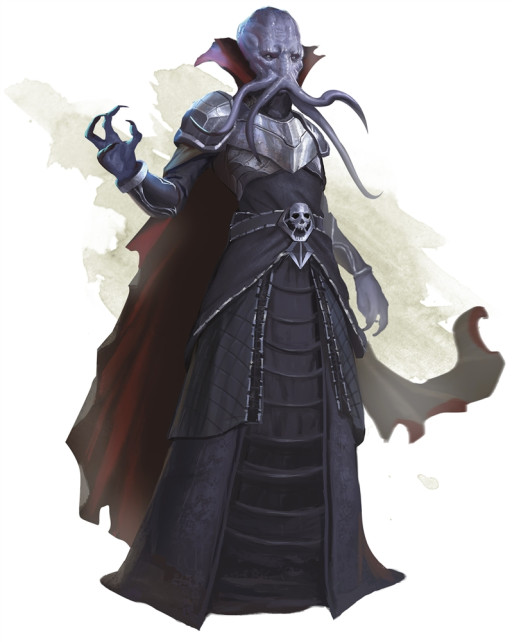
Lich monster #3
Illithiliches and elder brains are currently the most terrifying monsters for me as a player. Those two combined as boss monsters were what killed my poor monk with a combination of tentacles and disintegrate; and I will never forget that encounter.
To start on the illithilich, disintegrate is a nasty spell, especially with its spell save DC of 20. So the party better have a safety net like death ward against this guy. Magic missile and counterspell are also spells to watch out for with their damage and utility capabilities. Just like the lich, this monster may also contain a phylactery that will need to be destroyed if the party doesn’t want to see this guy ever again.
All in all, the illithilich will give characters a run for their money, as this is a creature you need to fight intelligently against instead of just run up and whack at it.
How Illithiliches Make an Exciting Encounter:
- Magical Resistance: The illithilich has advantage on saving throws against spells and other magical effects.
- Rejuvenation: If it has a phylactery, a destroyed illithilich gains a new body in 1d10 days, regaining all its hit points and becoming active again. The new body appears within 5ft. of the phylactery.
- Spellcasting: The illithilich is an 18th level spellcaster. Its spellcasting ability is Intelligence (spell save DC 20, +12 to hit with spell attacks). The lich has the following wizard spells prepared:
- Cantrips (at will): mage hand, prestidigitation, ray of frost
- 1st level (4 slots): detect magic, magic missile, shield, thunderwave
- 2nd level (3 slots): detect thoughts, invisibility, Melf’s acid arrow, mirror image
- 3rd level (3 slots): animate dead, counterspell, dispel magic, fireball
- 4th level (3 slots): blight, dimension door
- 5th level (3 slots): cloudkill, scrying
- 6th level (1 slot): disintegrate, globe of invulnerability
- 7th level (1 slot): finger of death, plane shift
- 8th level (1 slot): dominate monster, power word stun
- 9th level (1 slot): power word kill
Monster details:
- Hit Points: 135 (18d8+54)
- Armor Class: 17
- Challenge Rating: 22 (41,000 XP)
- Type: Medium undead, any evil alignment
- Source: Volo’s Guide to Monsters
- Stat Block
5. Elder Brain

Both intelligent and terrifying
And here’s the other monster that I find terrifying: the elder brain. There is a massive creep factor with this one because of the mind tricks it can play, and therefore it is a monster that can absolutely mess with characters even narratively (it certainly did with my party after the encounter). The tentacles can be a fun problem for melee fighters and some ranged attackers, especially with the chance of getting grappled. However, the biggest thing to watch out for is elder brain’s action of psychic link. Once a character is linked, the elder brain can continue to gain insight of the target with sense thoughts, break a target’s concentration on a casted spell, and use the target as a method of attacking others with psychic pulse.
Also don’t bother in trying to sneak up on this monster through invisibility or stealth. The elder brain possesses creature sense, which allows it to be aware of the presence of creatures within five miles that have an intelligence score of 4 or higher, and know the distance and direction of it.
If that isn’t challenging enough for a party, there is another fact that the elder brain won’t be alone. Mind flayers will start showing up as reinforcements to defend the creature they are linked with, and it will most definitely be a fight!
How Elder Brains Make an Exciting Encounter:
- Tentacle: Melee Weapon Attack: +7 to hit, reach 30 ft., one target. Hit: 20 (4d8+2) bludgeoning damage. If the target is a Huge or smaller creature, it is grappled (escape DC 15) and takes 9 (1d8+5) psychic damage at the start of each of its turns until the grapple ends. The elder brain can have up to four targets grappled at a time.
- Creature Sense: The elder brain is aware of the presence of creatures within 5 miles of it that have an Intelligence score of 4 or higher. It knows the distance and direction to each creature. as well as each one's intelligence score, but can't sense anything else about it. A creature protected by a mind blank spell. a nondetection spell, or similar magic can't be perceived in this manner.
- Mind Blast: The elder brain magically emits psychic energy. Creatures of the elder brain's choice within 60 feet of it must succeed on a DC 18 Intelligence saving throw or take 32 (5d10+5) psychic damage and be stunned for 1 minute. A target can repeat the saving throw at the end of each of its turns, ending the effect on itself on a success.
Monster details:
- Hit Points: 210 (20d10+100)
- Armor Class: 10
- Challenge Rating: 14 (11,500 XP)
- Type: Large aberration, lawful evil
- Source: Volo’s Guide to Monsters
- Stat Block
4. Dracolich
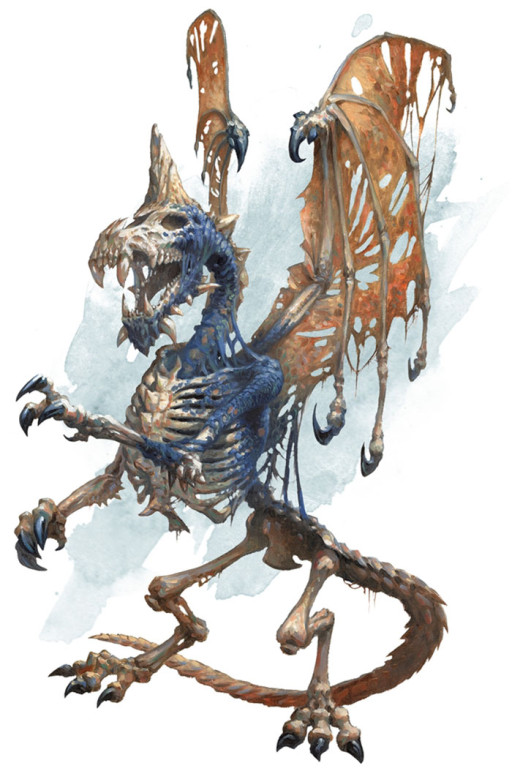
Lich monster #4
Because everything seems to be worse when it’s undead. Aside that it’s similar to fighting a dragon, dracoliches have a difference in some immunities, such as conditions. This alone can be challenging for a party that may want to control the encounter (and you practically need everything you have to control the fight against a dragon).
Dracoliches also have magic resistance as another difference between them and dragons, which has some people arguing that fighting a dracolich is more difficult than a dragon. Of course that depends on the type of dragon you’re fighting. Nevertheless, if you are a dungeon master looking for a new twist on a classic “big boss fight,” a dracolich would definitely be the way to go. Below are some details of an Adult Blue Dracolich as an example.
How Dracoliches Make an Exciting Encounter:
- Frightful Presence: Each creature of the dracolich's choice that is within 120 feet of the dracolich and aware of it must succeed on a DC 18 Wisdom saving throw or become frightened for 1 minute. A creature can repeat the saving throw at the end of each of its turns, ending the effect on itself on a success. If a creature's saving throw is successful or the effect ends for it, the creature is immune to the dracolich's Frightful Presence for the next 24 hours.
- Magic Resistance: The dracolich has advantage on saving throws against spells and other magical effects.
- Lightning Breath: The dracolich exhales lightning in a 90-foot line that is 5 feet wide. Each creature in that line must make a DC 20 Dexterity saving throw, taking 66 (12d10) lightning damage on a failed save, or half as much damage on a successful one.
Monster details:
- Hit Points: 225 (18d12+108)
- Armor Class: 19
- Challenge Rating: 17 (18,000 XP)
- Type: Huge undead, lawful evil
- Source: Monster Manual
- Stat Block
3. Kraken

Release the kraken!
Oh the kraken! My fear of this monster relates with the issues of having dealt with grappling tentacles in the past (again, thanks elder brain), but also with the fact that the kraken can swallow you without a problem. This monster is also amphibious and ignores difficult terrain, so here’s a practice of imagination for you: a kraken, on land, not hindered just because it’s out of water, can move and with extra reach with ten tentacles that grapple you and drag you to its mouth. That’s a whole lot of “nope” for me!
And that doesn’t even cover its ink cloud and lightning storm either. With its high armor class and a good chunk of hit points, this would definitely be an encounter to remember for a high level party. This would also be a good monster to use as a hint to a party that they’re not supposed to be where they currently are. Regardless, it’s a good challenge and a good time.
How Krakens Make an Exciting Encounter:
- Tentacles: Melee Weapon Attack: +7 to hit, reach 30 ft., one target. Hit: 20 (3d6 + 10) bludgeoning damage, and the target is grappled (escape DC 18). Until this grapple ends, the target is restrained. The kraken has ten tentacles, each of which can grapple one target.
- Freedom of Movement: The kraken ignores difficult terrain, and magical effects can't reduce its speed or cause it to be restrained. It can spend 5 feet of movement to escape from non magical restraints or being grappled.
- Bite: Melee Weapon Attack: +7 to hit, reach 5 ft., one target. Hit: 23 (3d8 + 10) piercing damage. If the target is a Large or smaller creature grappled by the kraken, that creature is swallowed, and the grapple ends. While swallowed, the creature is blinded and restrained, it has total cover against attacks and other effects outside the kraken, and it takes 42 (12d6) acid damage at the start of each of the kraken's turns. If the kraken takes 50 damage or more on a single turn from a creature inside it, the kraken must succeed on a DC 25 Constitution saving throw at the end of that turn or regurgitate all swallowed creatures, which fall prone in a space within 10 feet of the kraken. If the kraken dies, a swallowed creature is no longer restrained by it and can escape from the corpse using 15 feet of movement, exiting prone.
Monster details:
- Hit Points: 472 (27d20+189)
- Armor Class: 18
- Challenge Rating: 23 (50,000 XP)
- Type: Gargantuan monstrosity (titan), chaotic evil
- Source: Monster Manual
- Stat Block
2. Ancient Gold Dragon
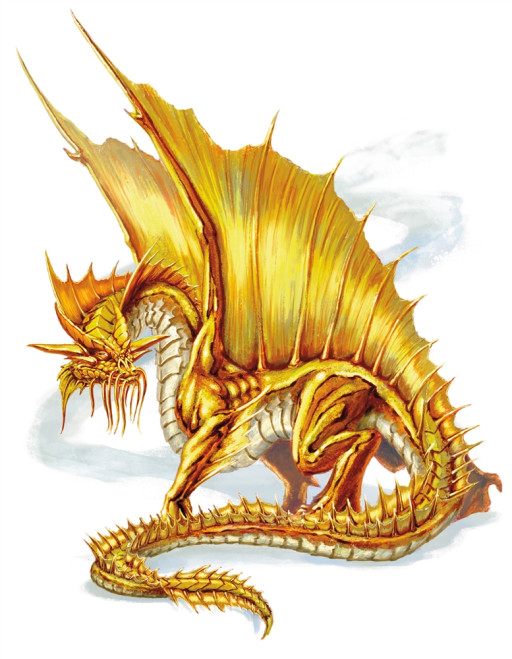
That's one tough lizard
There’s a reason why the game involves the word “dragons” in its title. Dragons are the monsters that will always have a sense of respect, reverence, and that exciting feeling in your bones that says “oh, this will be good!”
There are many types of dragons, all with their own nuances and challenges; but for this article, I will list the details of an ancient gold dragon. An ancient gold dragon has some serious statistics to regard: strength of 30, constitution of 29, and charisma of 28. The lowest statistic is its dexterity of 14. Plus, it has its legendary resistances that it can use three times a day. So at first glance, good luck with having this creature fail any saving throws!
After that, you are still dealing with its frightful presence action, and two breath weapons that it can utilize. This is arguably the toughest dragon to encounter, but it will make one amazing story for the player and character, if they survive.
How Ancient Gold Dragons Make an Exciting Encounter:
- Frightful Presence: Each creature of the dragon's choice that is within 120 feet of the dragon and aware of it must succeed on a DC 24 Wisdom saving throw or become frightened for 1 minute. A creature can repeat the saving throw at the end of each of its turns, ending the effect on itself on a success. If a creature's saving throw is successful or the effect ends for it, the creature is immune to the dragon's Frightful Presence for the next 24 hours.
- Breath Weapons: The dragon uses one of the following breath weapons.
- Fire Breath. The dragon exhales fire in a 90-foot cone. Each creature in that area must make a DC 24 Dexterity saving throw, taking 71 (13d10) fire damage on a failed save, or half as much damage on a successful one.
- Weakening Breath. The dragon exhales gas in a 90-foot cone. Each creature in that area must succeed on a DC 24 Strength saving throw or have disadvantage on Strength-based attack rolls, Strength checks, and Strength saving throws for 1 minute. A creature can repeat the saving throw at the end of each of its turns, ending the effect on itself on a success.
- Change Shape: The dragon magically polymorphs into a humanoid or beast that has a challenge rating no higher than its own, or back into its true form. It reverts to its true form if it dies. Any equipment it is wearing or carrying is absorbed or borne by the new form (the dragon's choice).
- In a new form, the dragon retains its alignment, hit points, Hit Dice, ability to speak, proficiencies, Legendary Resistance, lair actions, and Intelligence, Wisdom, and Charisma scores, as well as this action. Its statistics and capabilities are otherwise replaced by those of the new form, except any class features or legendary actions of that form.
Monster details:
- Hit Points: 546 (28d20+252)
- Armor Class: 22
- Challenge Rating: 24 (62,000 XP)
- Type: Gargantuan dragon, lawful good
- Source: Monster Manual
- Stat Block
1. Tarrasque
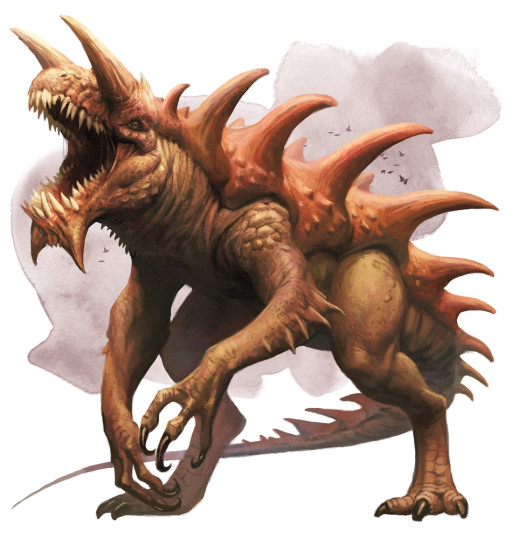
Battle at your own risk
This. Thing. Is. BIG. A tarrasque is essentially a tank that can also deal a lot of damage in one turn, using its frightful presence before unleashing five attacks to hit like a truck. That’s not all either (is it ever in Dungeons & Dragons?), because this monster can also swallow creatures that are a large size or smaller when they are grappled. A tarrasque is also immune to fire damage, which is a common damage type for magic users.
This is by no means an easy encounter for any party, and other than a god, this would be a good final fight for a campaign just because of its difficulty. Magic isn’t as effective due to its resistance, and while siege weapons will be helpful to dwindle down its hit points, a tarrasque deals double damage to objects and structures. This monster is essentially a giant source of fear and destruction with legs, and all I can say when you fight one is “may the dice be with you.”
How Tarrasques Make an Exciting Encounter:
- Magic Resistance: The tarrasque has advantage on saving throws against spells and other magical effects.
- Multiattack: The tarrasque can use its Frightful Presence. It then makes five attacks: one with its bite, two with its claws, one with its horns, and one with its tail. It can use its Swallow instead of its bite.
- Swallow: The tarrasque makes one bite attack against a Large or smaller creature it is grappling. If the attack hits, the target takes the bite's damage, the target is swallowed, and the grapple ends. While swallowed, the creature is blinded and restrained, it has total cover against attacks and other effects outside the tarrasque, and it takes 56 (16d6) acid damage at the start of each of the tarrasque's turns.
- If the tarrasque takes 60 damage or more on a single turn from a creature inside it, the tarrasque must succeed on a DC 20 Constitution saving throw at the end of that turn or regurgitate all swallowed creatures, which fall prone in a space within 10 feet of the tarrasque. If the tarrasque dies, a swallowed creature is no longer restrained by it and can escape from the corpse by using 30 feet of movement, exiting prone.
Monster details:
- Hit Points: 676 (33d20+330)
- Armor Class: 25
- Challenge Rating: 30 (155,000 XP)
- Type: Gargantuan monstrosity (titan), unaligned
- Source: Monster Manual
- Stat Block
There you have it! 15 boss monsters with an extremely large potential of making encounters something to remember for a party and its players. Give these a try in your campaign as a dungeon master. If you are a player however, keep an eye out for these creatures, as they can do a number on unexpecting adventurers! Once again, the world of Dungeons & Dragons is vast with monsters and bosses to fight; so feel free to give a shout out to others not mentioned here, along with sharing thrilling encounters with the ones on the list.
You may also be interested in:
The 13 Best Dungeons & Dragons Games (PC)

